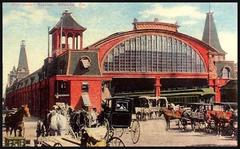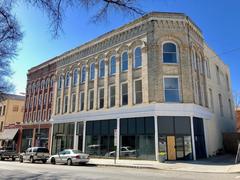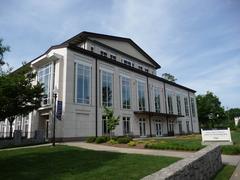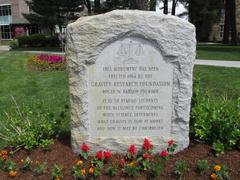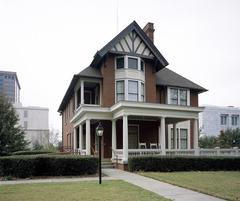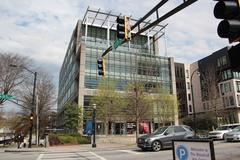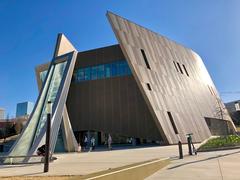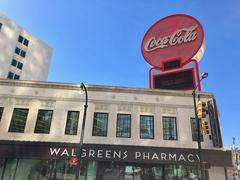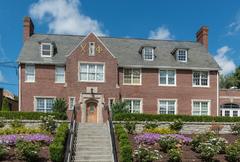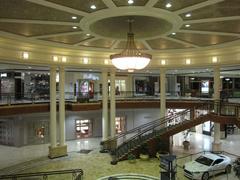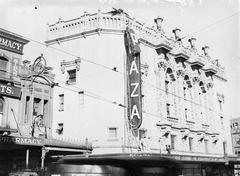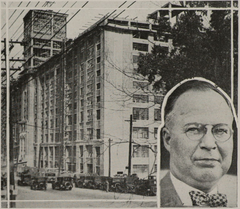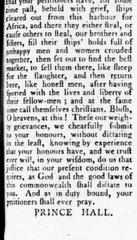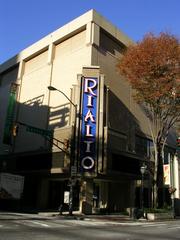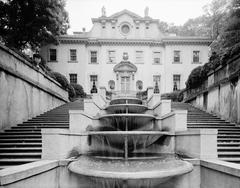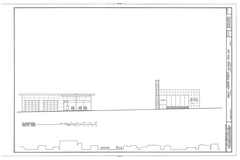
W. D. Grant Building Visiting Hours, Tickets, and Atlanta Historical Sites Guide
Date: 03/07/2025
Introduction
Rising above the historic streets of downtown Atlanta, the W. D. Grant Building is an enduring symbol of the city’s architectural ambition and resilience. Completed in 1898 and located at 44 Broad Street NW, this ten-story skyscraper was one of the first steel-frame structures in the Southeast, representing a pivotal moment in both Atlanta’s and the region’s urban evolution. Designed by notable architects Alexander Bruce and Thomas Henry Morgan, and named after prominent businessman William D. Grant, the building has served as a commercial landmark for over a century, adapting to changing times while maintaining its historic character.
Today, the W. D. Grant Building stands at the crossroads of the past and future—its ongoing adaptive reuse blending historic preservation with new residential and commercial life. For visitors, the building offers a unique glimpse into Atlanta’s late 19th-century spirit of innovation and the vibrant Fairlie-Poplar Historic District that surrounds it.
This comprehensive guide provides everything you need to plan a meaningful visit, including up-to-date visitor information, historical background, architectural highlights, accessibility tips, and recommendations for exploring downtown Atlanta’s many attractions.
Table of Contents
- Introduction
- Historical Background
- Architectural Significance
- Adaptive Reuse and Preservation
- Urban and Cultural Context
- Visiting the W. D. Grant Building
- Nearby Attractions
- Frequently Asked Questions (FAQs)
- Visuals and Media
- Conclusion & Call to Action
- References
Historical Background
The W. D. Grant Building is a testament to Atlanta’s rapid transformation after the Civil War. The site’s history stretches back to the 19th century, once home to an Episcopal church destroyed during General Sherman’s burning of Atlanta in 1864, later replaced by a commercial structure, and finally the Grant Building itself in 1898 (The Clio). The choice of site and timing reflected Atlanta’s ambitions to become a commercial powerhouse of the New South.
Named in honor of William D. Grant—a civic leader and entrepreneur—the building was initially known as the Prudential Building until 1910. Its completion marked Atlanta’s entry into the era of modern skyscrapers, signifying technological progress and economic optimism (Wikipedia; The Clio).
Architectural Significance
Design and Style
The W. D. Grant Building is a quintessential example of the Chicago School architectural movement, characterized by a steel-frame skeleton, expansive plate-glass windows, and a restrained yet elegant brick and terra cotta façade. Its U-shaped plan maximizes natural light for interior offices, while the rhythmic window bays and subtle ornamentation reflect the “form follows function” philosophy (Urbanize Atlanta; Curbed Atlanta).
Structural Innovations
At the time of its construction, the building’s steel-cage-frame allowed for unprecedented height, fire resistance, and open interior layouts. This innovation set the standard for future high-rise construction across the Southeast and established the Grant Building as a regional architectural landmark (wdanielanderson.wordpress.com). The use of brick and terra cotta for structural and decorative elements ensured both durability and aesthetic distinction.
Interior Features
Originally, the building’s interiors featured high ceilings, decorative moldings, and quality finishes designed to convey stability and prestige. Restoration efforts have preserved much of the original lobby craftsmanship, including ornate elevator doors and period lighting. While upper floors are currently being adapted for residential use, public areas maintain their historic ambiance (therealdeal.com).
Adaptive Reuse and Preservation
The W. D. Grant Building’s current redevelopment is a model of adaptive reuse—preserving historic exteriors and significant architectural details while converting upper floors into micro-apartments and lower levels into commercial and retail spaces (GlobeNewswire). Listed on the National Register of Historic Places since 1979, the building’s protected status ensures ongoing stewardship and sensitive modernization (National Park Service).
Urban and Cultural Context
Nestled in the Fairlie-Poplar Historic District, the Grant Building is surrounded by a vibrant mix of late 19th and early 20th-century commercial architecture. The district is known for its pedestrian-friendly streetscapes, diverse dining and retail, and a lively urban atmosphere. The area also hosts significant cultural events, including Atlanta Black Pride and Atlanta Pride, reflecting the city’s dynamic and inclusive spirit (Lonely Planet).
Visiting the W. D. Grant Building
Hours and Admission
- Exterior Viewing: The Grant Building’s exterior and lobby are best appreciated during weekday business hours, typically Monday to Friday from 9:00 AM to 5:00 PM.
- Interior Access: Due to ongoing renovations and its use as a private residential and commercial property, public access to upper floors is restricted. Access to the lobby and ground-floor retail may be available depending on construction phases.
- Admission: There is no fee to view the building’s exterior or lobby when open.
Accessibility
The building and surrounding district are generally wheelchair accessible, with ramps, elevators, and well-maintained sidewalks. The ongoing redevelopment includes upgrades to meet ADA standards in public areas.
Guided Tours and Travel Tips
- Guided Tours: While dedicated tours of the Grant Building are rare, several walking tours of downtown Atlanta and the Fairlie-Poplar District include the site as a highlight (Unexpected Atlanta). These tours offer rich context on the city’s architectural evolution.
- Getting There: The building is easily accessible by MARTA (Peachtree Center and Five Points stations) and by bus. Paid public parking is nearby, but public transit is recommended due to downtown traffic and limited parking.
- Photography: The exterior, especially from the corner of Broad and Walton Streets, offers excellent opportunities for photos, particularly in morning or late afternoon light.
- Visitor Tips: The district is lively during business hours; for a quieter experience, visit on weekends. Exercise typical urban precautions after dark.
Nearby Attractions
The Grant Building’s central location makes it an ideal starting point for exploring Atlanta’s top sights:
- Fairlie-Poplar District: Discover historic buildings, public art, and cafes.
- Centennial Olympic Park: A major green space with gardens, fountains, and event venues.
- Georgia Aquarium and World of Coca-Cola: Major attractions within a short walk.
- Woodruff Park: A popular gathering spot for locals and visitors alike.
- Georgia State University & Underground Atlanta: Cultural events, galleries, and entertainment are all nearby (Discover Atlanta).
Frequently Asked Questions (FAQs)
Q: What are the current visiting hours for the W. D. Grant Building?
A: The lobby and exterior are generally accessible Monday through Friday, 9:00 AM–5:00 PM, but interior access is limited due to ongoing redevelopment.
Q: Is there an admission fee or are tickets required?
A: No tickets are required to view the building’s exterior or lobby during open hours.
Q: Are guided tours available?
A: Dedicated tours are rare, but several walking tours of the Fairlie-Poplar Historic District feature the Grant Building.
Q: Is the building wheelchair accessible?
A: Yes, public areas and the surrounding district are generally ADA compliant.
Q: Can I take photographs?
A: Photography is permitted in public areas and outside the building; please be mindful of residents and ongoing construction.
Visuals and Media
- Image: Exterior view of the W. D. Grant Building with blue sky backdrop
(alt text: “W. D. Grant Building Atlanta historic skyscraper at 44 Broad Street NW”) - Image: Historic lobby interior showing original elevators and decorative details
(alt text: “W. D. Grant Building ornate lobby with restored features”) - Map: Interactive map showing the W. D. Grant Building location and nearby attractions
For more visuals and virtual tours, see the Atlanta Historic Preservation website.
Conclusion & Call to Action
The W. D. Grant Building is a pivotal site in Atlanta’s urban story—embodying technological innovation, architectural beauty, and a spirit of community resilience. While public access is limited during its adaptive transformation, the building’s striking façade and storied location offer rich opportunities for discovery. Visitors are encouraged to explore the surrounding Fairlie-Poplar Historic District, participate in local walking tours, and immerse themselves in the architectural heritage that defines Atlanta.
To stay updated on special events, open houses, and guided tours, download the Audiala app and follow us on social media. Enhance your experience with interactive maps, expert-led tours, and the latest on Atlanta’s top historic destinations.
References
- Atlanta Preservation Center – W. D. Grant Building
- Curbed Atlanta – Downtown Atlanta Development: Grant Building
- The Clio – W. D. Grant Building
- Urbanize Atlanta – Redevelopment Kick-Off
- National Park Service – NRHP Grant Building
- GlobeNewswire – Monarch Private Capital Finances Rehabilitation
- Bisnow Atlanta – Grant Building Office News
- Lonely Planet – Atlanta Travel Guide
- Discover Atlanta – Official Visitor Guide
- wdanielanderson.wordpress.com – Historic Districts of Downtown Atlanta
- therealdeal.com – Grant Building Conversion News
- Unexpected Atlanta – Ultimate Atlanta Guide















